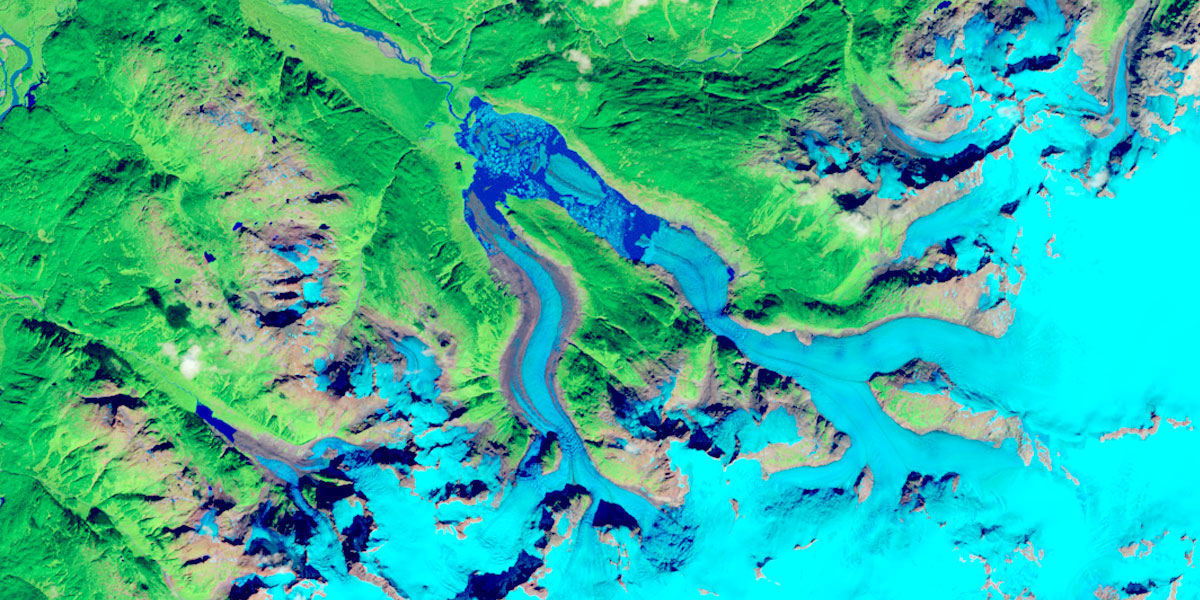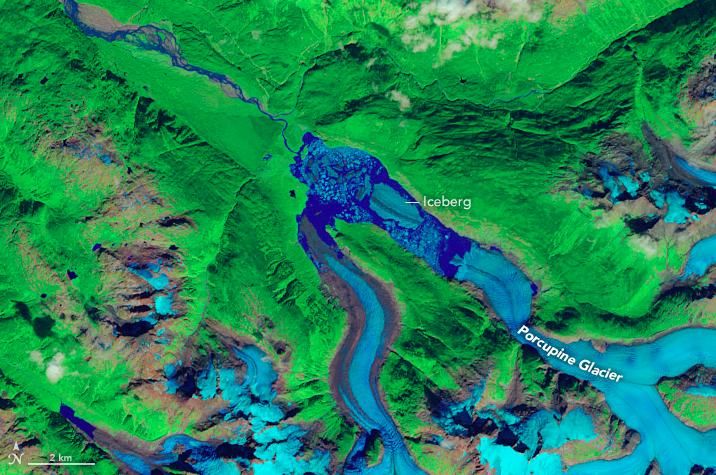
Massive Iceberg Breaks Off Glacier in ‘Biggest Calving Event in North America’ in 33 Years

A nearly three-quarter-square-mile chunk of ice broke off the
Porcupine Glacier in British Columbia this summer, but it was only detected recently when the National Aeronautics and Space Administration posted a satellite image of the area. Glaciologist Mauri Pelto called it “the biggest calving event in North America” that he has ever seen.

The Porcupine Glacier, a 12-mile-long tongue of an ice field in the Hoodoo Mountains of Northern British Columbia, has been
studied for many years. From 1985 to 2005, researchers saw a reduction of 0.3 percent a year. The glacier has also been thinning, at a rate of about 2.5 inches per year. As it melts, it grows a lake at the end of the glacier.
“The volume loss has been speeding up in these glaciers,” Pelto
told The Globe and Mail.
The Landsat 8 satellite passed over Porcupine Glacier on Aug. 27 revealing the breakaway ice as compared to an image made two days earlier. Dr. Pelto, who has been analyzing satellite imagery of the area’s glaciers since the 1980s, said the Porcupine Glacier event is part of a broader trend in which glaciers are retreating rapidly. This summer’s sudden calving event shrunk the glacier back a full mile.
[vimeo https://vimeo.com/185171648 expand=1]
Pelto is a professor of environmental science at Nichols College in Dudley, Massachusetts, a small town on the Connecticut border south of Worcester. Pelto has been making field trips to the North Cascades every year since 1983 and uses satellite images to see the larger view.
“Without the images, we would just have the isolated point measurements of ground truth at specific times,” Pelto said.
This calving event would have been unlike those often seen in
Alaska, where a large section of ice crashes dramatically into the sea. The Porcupine Glacier features a low slope, so the iceberg would have simply slid into the lake.
“It would have been more like if you’re pushing off from the shore in a canoe. It didn’t break off and fall in,” Pelto explained.
During his three decades of research, Pelto has also observed a large number of new alpine lakes being formed and expanded as glaciers have retreated in the Alps, Himalayas, Andes, North America, New Zealand, and Norway. He has also witnessed new islands revealed off the coast of Greenland and Novaya Zemlya that had been hidden under ice for thousands of years.
The U.S. Geological Survey says that
Alaska’s glaciers are losing 75 billion tons of ice each year. That’s an amount of water that would fill Yankee Stadium 150,000 times, year after year.
Glaciers on these 25 mountains will completely melt in 25 years https://t.co/I1L13uobCL via @EcoWatch #climate #divest pic.twitter.com/TmpxGxlOwR
— climatehawk1 (@climatehawk1) October 4, 2016
“It’s hard for me to forecast the climate going forward, but it’s not going to get better for the glaciers,” Pelto said.

 233k
233k  41k
41k  Subscribe
Subscribe 